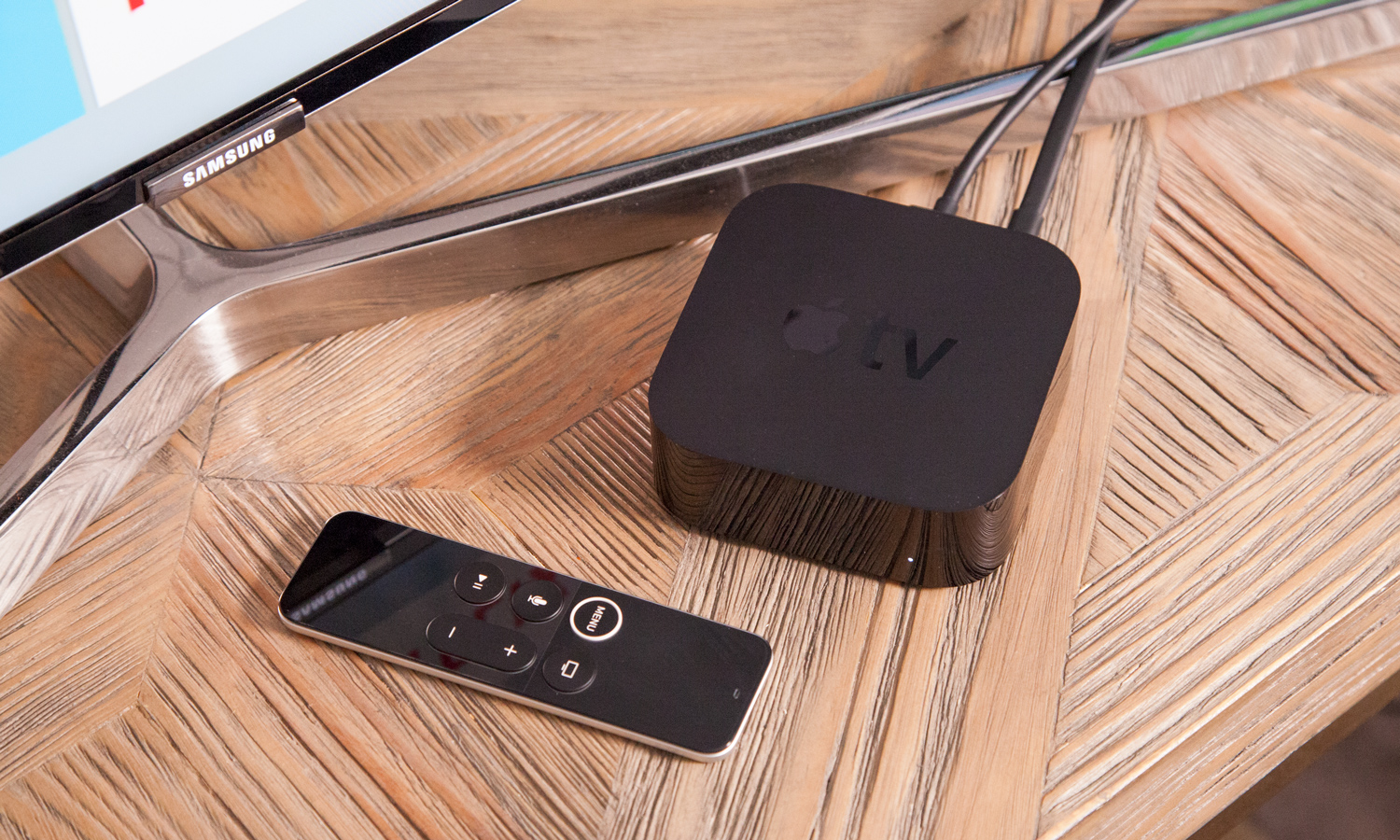Tom's Guide Verdict
The Apple TV 4K offers an attractive, customizable interface and affordable UHD content, but design flaws and a subpar remote hold it back.
Pros
- +
Fantastic 4K HDR content
- +
Intuitive home screen
- +
Simple iOS and macOS integration
Cons
- -
Expensive
- -
Fiddly remote
- -
No digital audio or USB ports
Why you can trust Tom's Guide
Editor's note: The Apple TV 4K (2017) has been upgraded. Check out our Apple TV 4K (2021) review
The fourth-generation Apple TV was a competent, if unexciting streaming box, buoyed by strong Siri navigation and hamstrung by navigational oddities and a high price tag. Now that Apple has had two years to improve, the company has debuted the Apple TV 4K ($179 to $199). This set is everything we loved (and hated) about Apple's streaming box, but now with 4K and HDR capabilities making the best streaming device ... for Apple users, at least.
But as one of the best Apple HomeKit products, you'll still find an attractive and customizable interface, strong Apple ecosystem integration, and powerful voice search via Siri. You'll also still find unintuitive navigation options, a remote with a learning curve and an asking price that borders on prohibitive. If you live, breathe and dream Apple and need a way to watch iTunes content in 4K, the Apple TV 4K may be worth a look. Otherwise, this set doesn't offer many advantages over its cheaper competitors.
Apple TV 4K review: Price and release date
The Apple TV 4K starts at $179 on Amazon for the 32GB model. Its 64GB counterpart is $199.
The Apple TV 4K came out on September 22, 2017.
Video: 4K, HDR, Dolby Vision
Audio: Dolby Atmos
Processor: A10X Fusion
Dimensions: 3.9 x 3.9 x 1.4 inches
In the box: Apple TV 4K, Siri remote, Lightning to USB cable
Smart assistant support: Siri
Apple TV 4K review: Design
Apple has generally adopted an "if it ain't broke, don't fix it" approach to the Apple TV, which has evolved from a small black box into a slightly more elaborate black box. Measuring 4.0 x 4.0 x 1.3 inches, it's neither small enough to hide behind your TV nor big enough to affect the overall appearance of your entertainment center. It looks unremarkable yet elegant.
The back of the device is similarly uncluttered. There's a power port, an HDMI port and an Ethernet port. (The device also works just fine via Wi-Fi.) The lack of a digital audio port could be a pretty significant oversight, because that port can enhance your audio experience significantly. Presenting 4K HDR videos without a high-fidelity audio option makes this set feel incomplete.
Get instant access to breaking news, the hottest reviews, great deals and helpful tips.
Apple TV 4K review: Interface
The Apple TV 4K's interface is something of a paradox. Visually, it's one of the cleanest, most attractive, most customizable menu systems around. Navigationally, it could still use a lot of work, particularly for those times when you're trying to switch among multiple services.
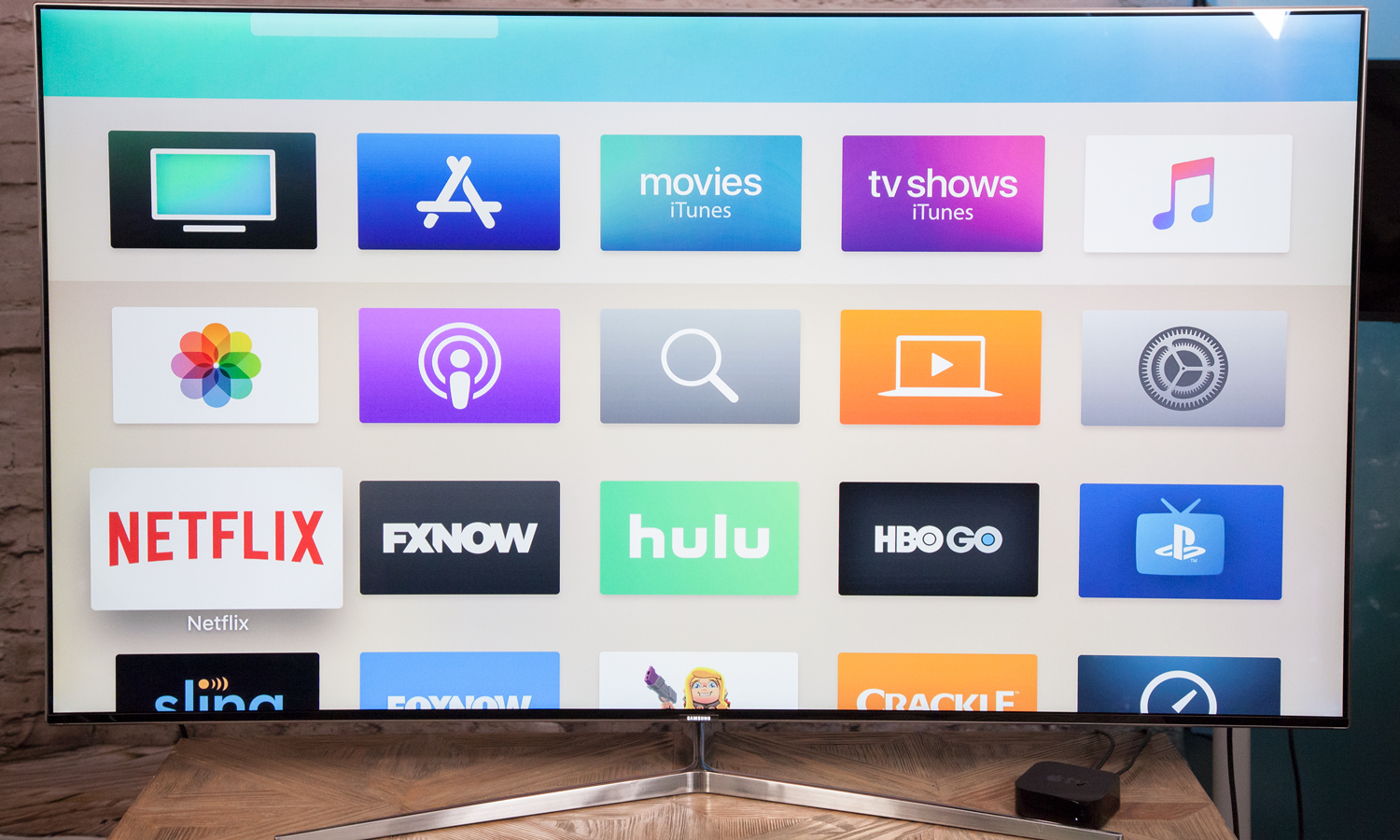
First and foremost, Apple TV's home screen and menus are simply gorgeous. Unlike the tedious Amazon Fire TV or the jumbled Nvidia Shield TV, the Apple TV makes use of large, clean, movable icons for each of your apps. There is absolutely no guesswork in figuring out where to go for your favorite content. Every app you have is available right from the home screen, and you can drag and drop their icons into whichever order is most convenient for you, or even make folders to cluster similar apps together. The addition of folders, in fact, puts the Apple TV slightly ahead of the Roku, long the gold standard in streaming-box organization.
Away from the home screen, however, things are a little less straightforward. Apple has always favored surface-level aesthetics over deep-cut functionality in the Apple TV, but after two years, barely anything has changed. Unless what you're looking for is on the front page, the App Store is a mess (more on that later). Apple's own iTunes apps are difficult to parse, separating movies, TV shows and music into three different stores for — well, no real reason, as far as I can tell.
The TV app still is not any easier than just loading up an app directly, unless you are watching so much stuff that you can't remember where you are in any given series.
Arguably, the biggest navigational problem is the TV app, which concatenates streaming content from a wide variety of sources. Although the app debuted last year, it still feels half-baked. In theory, the TV app is kind of a one-stop shop for everything you're watching, drawing in content from apps like HBO Go, Hulu and ABC and even keeping track of which episodes you're watching on which service. Because the TV app makes use of only those apps to which you're already subscribed, it can theoretically show you a lot of cool content that won't cost you any additional money.
In practice, though, it's still not any easier than just loading up an app directly, unless you are watching so much stuff that you can't remember where you are in any given series. The recommendations are not tailored for individual users, instead just showing what's popular in any given service. While it's good to know what you can watch without paying extra (aside from a small row of new releases available for a charge through iTunes, which we'll let slide), it's not worth giving up the algorithms that tailor recommendations to your taste within individual apps.
Apple TV 4K review: Remote
The Siri remote that comes with the Apple TV 4K is unlike most other streaming remotes in that you must rely on a square touchpad to get around, rather than directional buttons. You'll tap and slide your fingers around to navigate through content instead of physically pressing anything.
Whether I was scrolling through shows or trying to control a character in a game, the touchpad was overly sensitive and imprecise.
Save for a white circle around the Menu button, it's exactly the same as Apple's remote from 2015, complete with the touchpad, a home button, a play/pause button and a volume control that syncs directly with your TV.
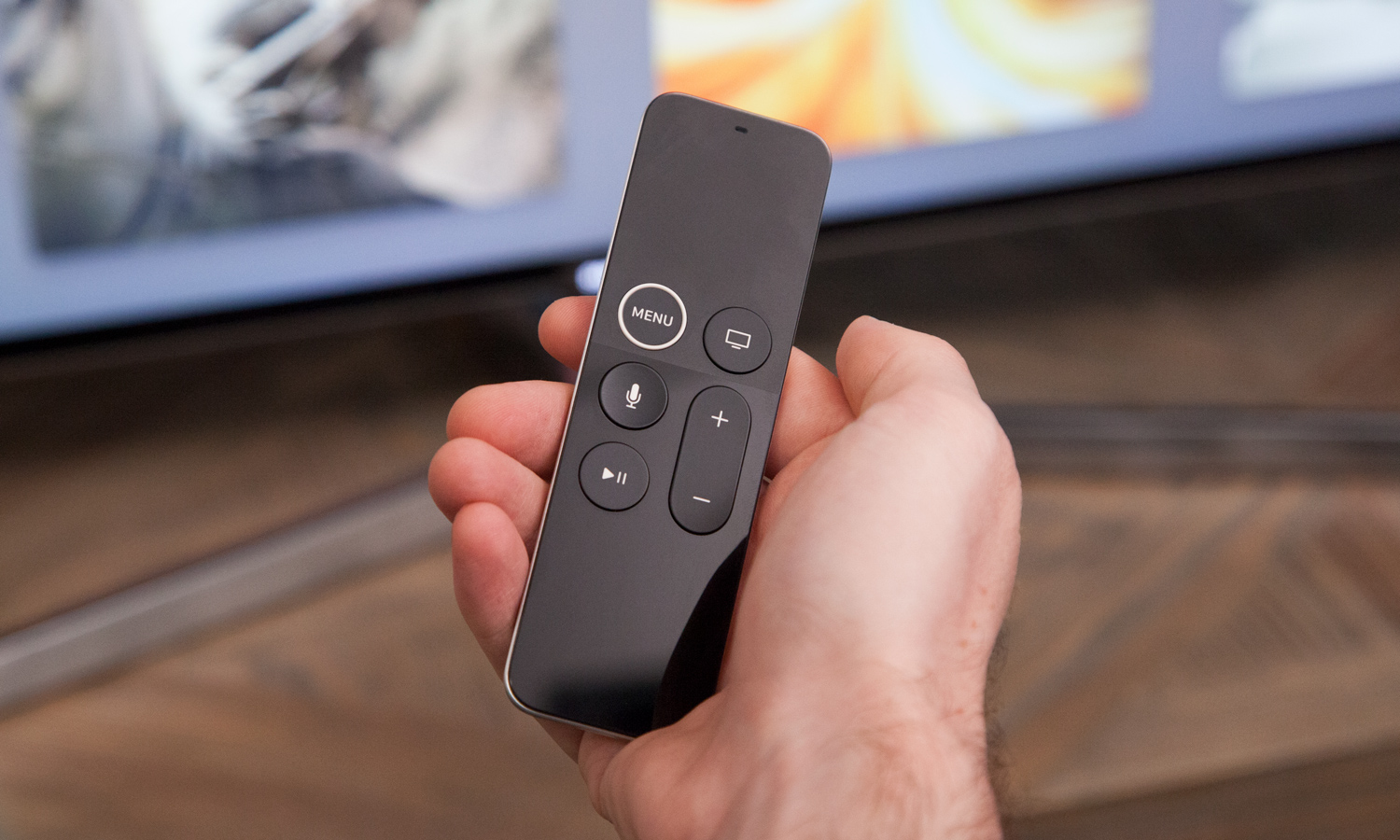
In theory, touch controls mean you can swipe to your favorite content much faster; in practice, it means that you're going to overshoot your destination — at least until you've really spent a lot of time with the remote. Whether I was scrolling through shows, inputting a password or trying to control a character in a game, the touchpad was overly sensitive and imprecise.
The one handy feature of the remote is that you can hit a button to bring up the Siri search, which is, by and large, still excellent. Granted, this feature is a lot more common among streaming remotes now than it was when the 4th-gen Apple TV debuted, but it's still a pretty darn useful button.
Apple TV Plus review: Search
The Apple TV 4K is unparalleled is in its search features. Accessing the same technology that goes into Siri, you can use voice or text to search for just about any piece of content imaginable. If it's on iTunes — or one of more than 60 compatible apps, including Netflix and Hulu — the search will find it. You can search for episodes of Star Trek with obscure guest stars; you can search for 4K movies starring Hugh Jackman; you can search for poorly reviewed movies from the '90s. Apple TV 4K's search handled everything that I threw at it, at least in terms of movies, TV and music.
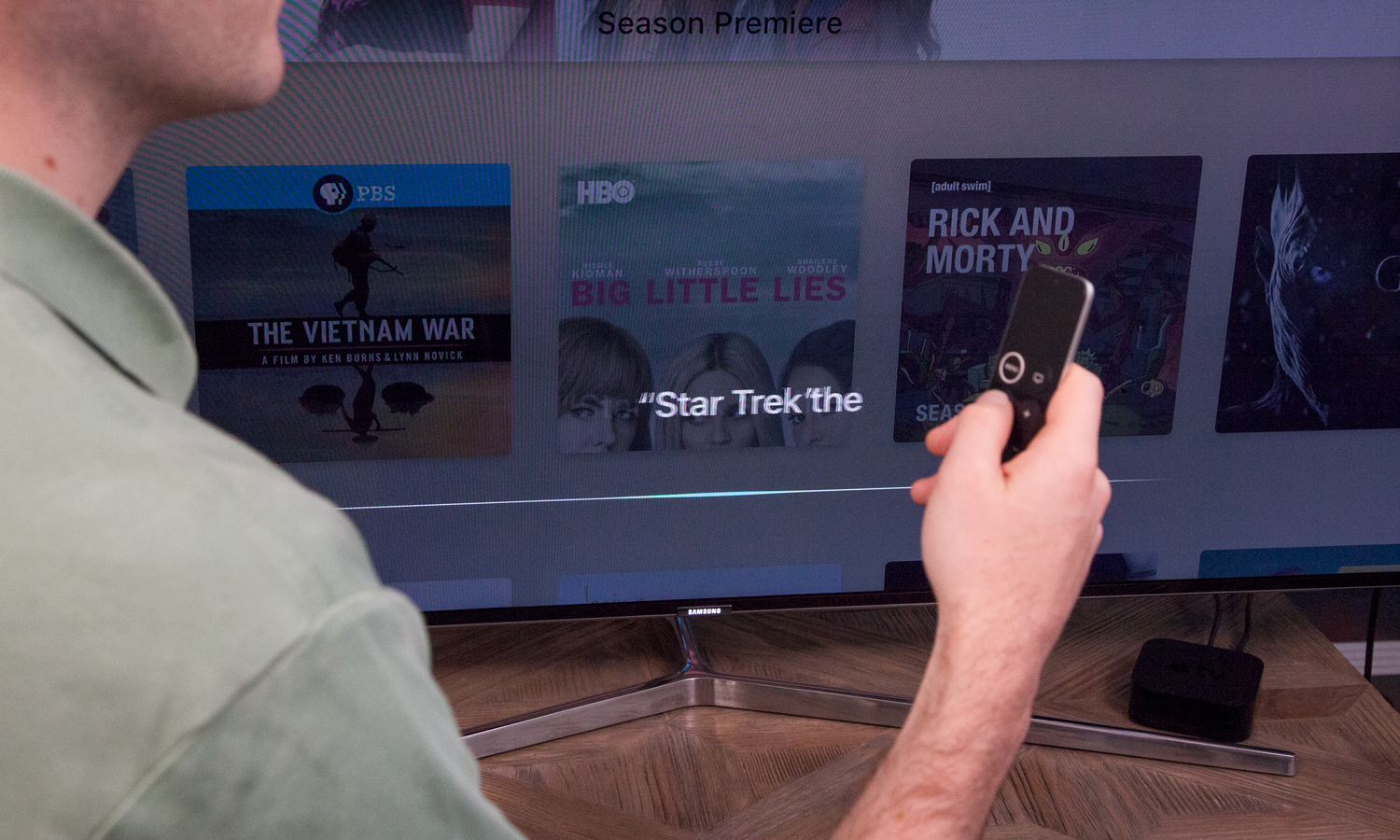
However, the Siri search was considerably less adept at picking out apps. It was unable to find the Disney Channel, Sling TV or FX Now — three fairly common streaming services. This isn't helped at all by the fact that the App Store is still, to put it charitably, a mess. If the app or game you want is popular enough to make the front page, that app is easy enough to find. Otherwise, the menus are both haphazard and incomplete.
There’s no "A-Z" listing, meaning that your browsing will always be restricted to what's popular, or what the Apple devs want you to see. If you don't know the exact name of your app and don't find it within the fairly anemic lists in the App Store, you'll probably never locate it at all. Having a streamlined store is convenient, perhaps, but it does take all the joy out of finding that one specialized app you didn't even know you needed.
Apple TV 4K review: Content and Apps
The Apple TV 4K has just about everything the average streaming enthusiast needs. In addition to iTunes, you can get content via Netflix, Hulu, Crackle, Spotify and Pandora, as well as a plethora of network-specific apps from Fox, ABC, CBS, FX, HBO, Starz and others.

You've got your choice of cable TV alternatives, with access to Sling TV and YouTube TV (among others), and you can even specify your TV provider during the initial system setup. This saves you from a lot of tedious logins later on.
Apple TV 4K review: Apple Arcade
While Apple Arcade debuted on iPhones, it's now available on iPads, Macs and, of course, Apple TVs. This subscription services costs $5 per month, and lets you download as many premium mobile games as you want from a library of dozens. From the gorgeous high-octane action of Sayonara Wild Hearts to the cyberpunk dialogue-driven adventures in Neo Cab, there's something for everyone.
Tom's Guide has not yet had a chance to test Apple Arcade on an Apple TV, but the selection alone is a feather in the device's cap, as far as games go.
Apple TV 4K review: Other features
Back when the fourth-gen Apple TV came out, the company was very quick to tout its gaming features. With high-budget, innovative titles such as Transistor and Beat Sports, it was easy to believe that the Apple TV might be the second streaming box to make an honest go of gaming. (The Shield TV was the first, obviously.)
Since then, the Apple TV has gained a lot of good games and even more cut-rate, sloppy, ignorable ones. As far as I could tell, the system doesn't have any new exclusive titles, and highly anticipated releases such as Jenova Chen's Sky aren't available yet.
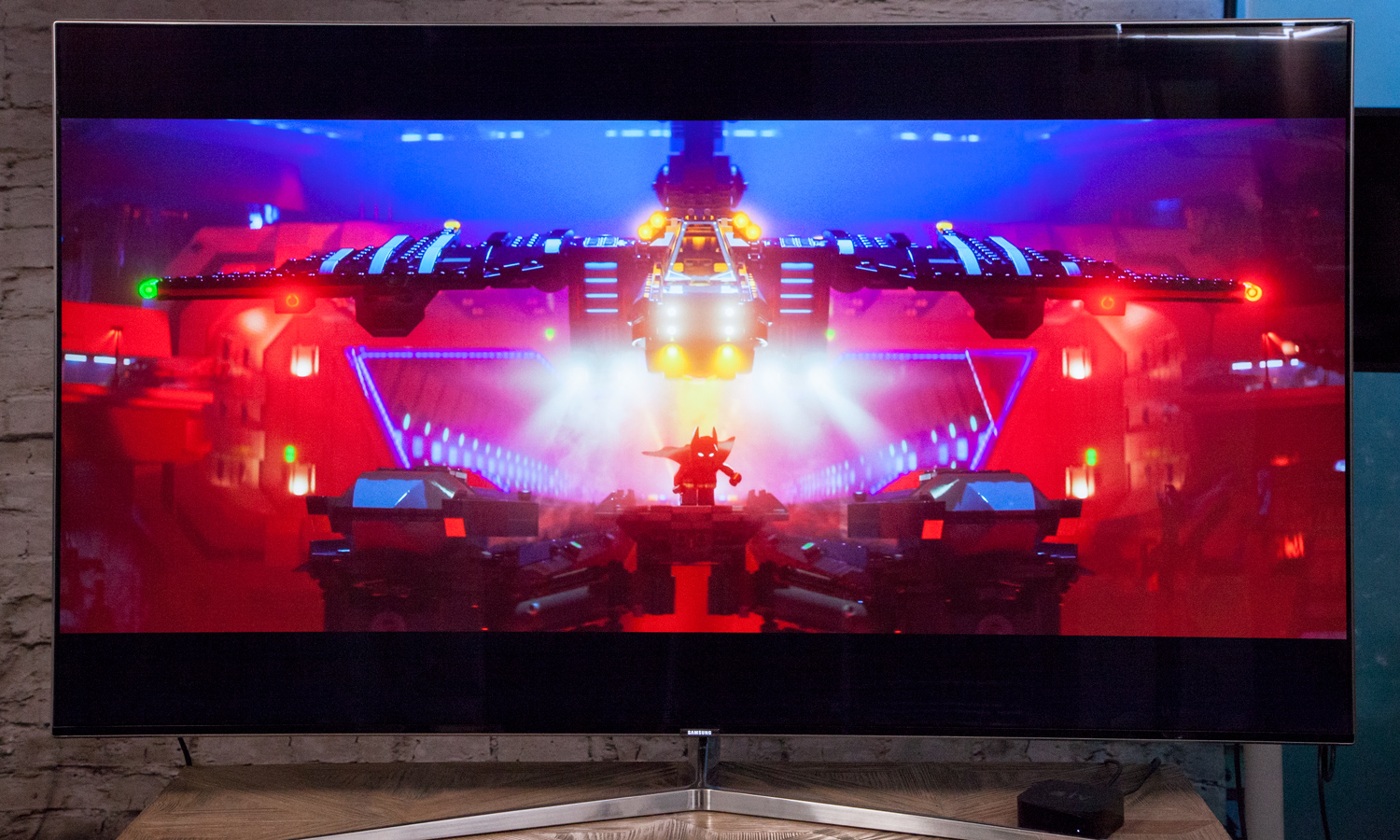
Apple no longer insists that developers make their games compatible with the remote; games can require a controller instead. There still aren't that many Apple TV controllers, although the good news is that the SteelSeries Nimbus is a quite good one. Still, be warned that if you play games with an Apple TV remote, the controls tend to be extremely imprecise and floaty. This can be especially damaging in a platformer like Momoka: An Interplanetary Adventure, in which I couldn't finish the first dungeon, because it was too difficult to jump, aim and shoot at the same time.
Lots of streaming boxes offer games; comparatively few offer smart home options. The Apple TV 4K allows you to control smart home devices, provided they run on the Apple HomeKit protocol. This includes a wide variety of HomeKit devices, including thermostats from Honeywell, security cameras from D-Link and light bulbs from Philips. Once you've gone through a rather cumbersome and clumsy setup process, involving an iOS device and a plethora of settings menus, you can use your Apple TV as a smart home hub. This lets you control your gadgets, even when you're away from your home Wi-Fi network. The Apple TV is pretty much the only HomeKit hub on the market, so that alone might make it worth a look.
One advantage for existing Apple customers is AirPlay, a screen-mirroring capability that resembles Miracast and Google Cast. Using AirPlay, users can either broadcast their iTunes libraries up on the big screen or mirror their screens directly. This can be useful if you want to show a presentation on a TV screen or get some productivity work done in your living room; otherwise, the feature is much less necessary than it used to be. Broadcasting iTunes content from your iDevice or Mac isn't really necessary, because your iTunes content is already available on the Apple TV. Even your own photos and videos are just a click away in the built-in Photo app.
Most of these boxes have USB ports for side-loaded content; the Apple TV does not. You can still set up a media server and stream your personal content from programs like Plex or VLC, but you can't just plug in a thumb drive and watch your own personal content — and you can’t charge your remote, unless you have a wall adapter or a USB port on a powered device handy.
Apple TV 4K review: Performance
The biggest thing that sets apart the Apple TV 4K from its predecessor is the new device's ability to display videos in 4K and HDR, and this box's A10X Fusion chip is more than up to the task. The 4K resolution is self-explanatory; the HDR comes in both Dolby Vision and HDR 10 flavors, ensuring that you'll get a vibrant color palette, no matter which studio your movie or TV show comes from.
You'll need a pretty powerful Internet connection to stream 4K HDR content (you need at least 25 Mbps down, which is more than what we got on a standard home Wi-Fi network), but content loads quickly and smoothly. Streams usually took just a few seconds to buffer before reaching full 1080p HD, and perhaps an additional 5 seconds before 4K HDR kicked in. This will vary depending on the strength of your internet connection, but if you have the requisite speed, the Apple TV 4K will leverage it.

Unsurprisingly, movies and TV look gorgeous in 4K HDR as well. In The Lego Batman Movie, the reds and oranges of explosions played off the shiny, black Batmobile, while the eerie blue-green sky ensured that the vibrant heroes and villains looked as real as the toys that inspired them.
Apple has also indulged in a bit of generosity by offering viewers 4K movies at the same price as their full-HD counterparts, with free upgrades on movies customers have already purchased. Although studios ultimately set the price of their movies, this offer applies to every piece of content in the iTunes library.
The only disappointing part of the visuals is that the upscaling doesn't do much for older content. Rather than switching back and forth between different screen resolutions (this can be annoying, but it at least gives you the proper picture), the Apple TV simply upscales SD and HD shows to mimic a higher resolution. The scaling worked better on some shows than others. The Handmaid's Tale on Hulu looked great, but Penn & Teller: Fool Us on iTunes appeared grainy and oversaturated. If you go for older shows on Netflix and Hulu, the jump from SD could be even more jarring.
Otherwise, navigation through the menus feels snappy and immediate, and the 4K menus are a nice touch. Most of Apple's competitors still use 1080p menus, even if they're capable of displaying 4K movies and shows.
Apple TV 4K vs. the Competition
Since the Apple TV 4K is considerably more expensive than most of its competitors, it's worth seeing how they all line up in terms of functionality.
The Google Chromecast Ultra is a 4K HDR device that relies on your phone, tablet or computer to work. It has no visible operating system or remote control; just choose a piece of content on your own device, then cast that media to your TV. (The protocol is not the same thing as Miracast, because your phone is not actually providing content, just telling the Chromecast what to do.) The picture quality is comparable to that of the Apple TV 4K, and the Google device costs nearly a full $100 less, but you won't have access to many games or smart home perks.
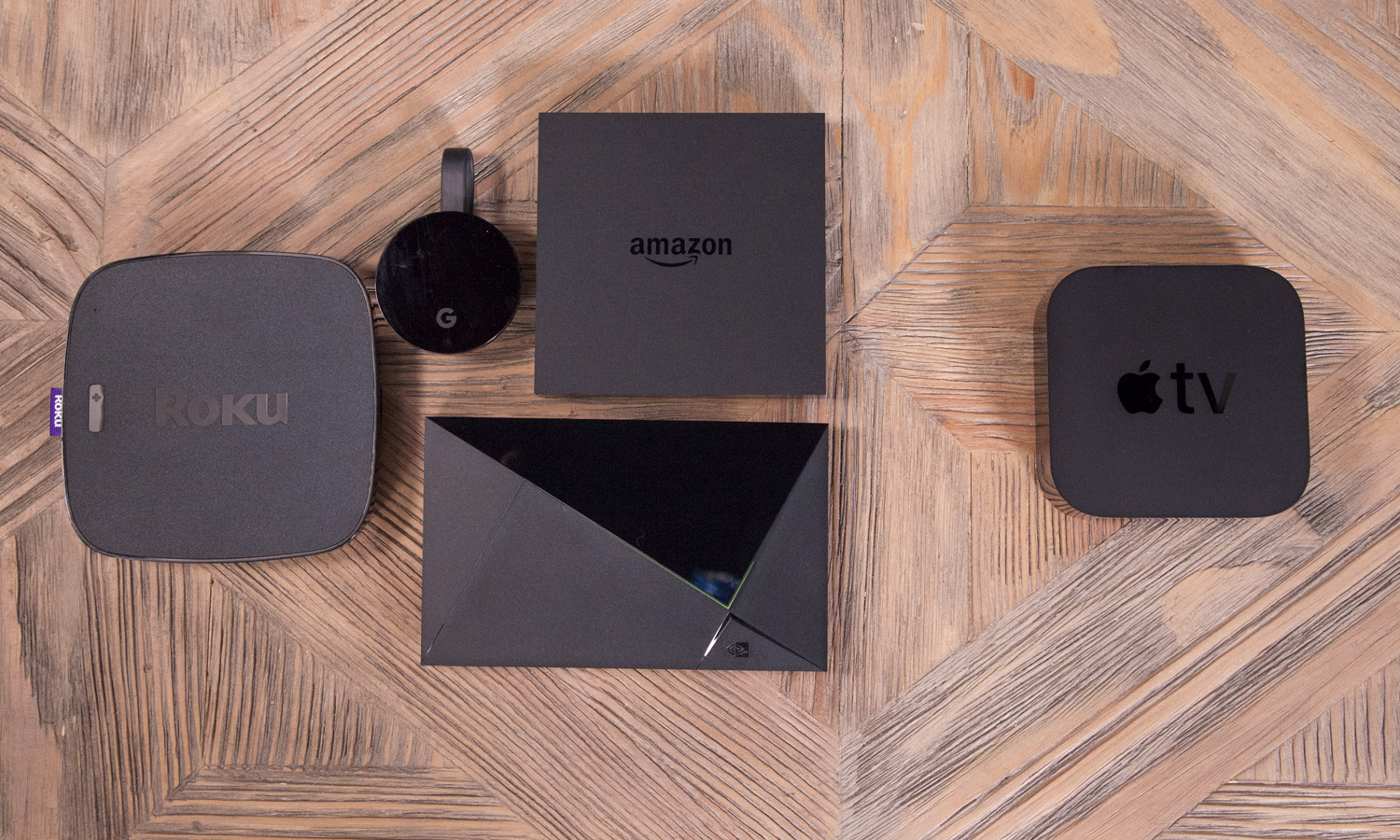
The Amazon Fire TV costs $100 and offers 4K features, but no HDR. The biggest advantage of the Fire TV over the Apple TV 4K (aside from the price) is that it ties into your Amazon account and offers you personalized recommendations based on your Amazon Video and Music history. (Even when the Apple TV 4K gets an Amazon app, it won’t do this right from your home screen.) You can also control smart home gadgets if you have Amazon's Alexa gadget. The Fire TV one's good if you have an Amazon Prime subscription, but it's nothing special without one.
The Roku Ultra ($100) is probably the most complete streaming device for the money, in terms of both content and features. Not only do you get the largest app selection on the market, but you also get 4K HDR picture and a remote control with a headphone jack. (Apple TV requires Bluetooth headphones for private listening.) The game selection isn't as good as with Apple TV 4K, however, and you don't get any smart home features.
The most comparable system to the Apple TV, in terms of both price and functionality, is the Nvidia Shield TV ($200). Like with the Apple TV, you get 4K HDR content and smart home features; unlike on the Apple TV, you can also access some of the latest and greatest big-budget games through the Nvidia GeForce Now streaming service. With some extra accessories, you can even stream live TV from an HD antenna.
Apple TV 4K review: Bottom Line
In "Through the Looking-Glass and what Alice Found There" by Lewis Carroll, the Red Queen says to Alice, "Now, here, you see, it takes all the running you can do to keep in the same place." Apple has run very fast indeed to address some of the biggest problems with the 4th-gen Apple TV — and yet, given the pace of its competition, Apple has mostly stayed in the same spot.

To give credit where it's due, Apple TV 4K hosts gorgeous content in vivid colors. The home screen is second-to-none, and the set's iTunes integration alone might be worth the cost of admission for viewers who are already invested in the Apple ecosystem.
On the other hand, the new Apple TV doesn't do much more than streaming boxes that cost almost $100 less — and in some cases, it doesn't even do as much. In addition, as slick as the touchpad remote is, it's less precise than remotes with physical buttons.
Ultimately, the Apple TV 4K is gorgeous and intuitive, but it's not ambitious enough for the high price. If you've got a 4K TV and a lot of money tied up in the Apple ecosystem, this box is worth a look. Otherwise, you could probably invest the extra $80 in some excellent 4K movies instead.
Credit: Shaun Lucas/Tom's Guide

Marshall Honorof was a senior editor for Tom's Guide, overseeing the site's coverage of gaming hardware and software. He comes from a science writing background, having studied paleomammalogy, biological anthropology, and the history of science and technology. After hours, you can find him practicing taekwondo or doing deep dives on classic sci-fi.
-
LazarXD There's no mention that unlike the others, the Apple TV also functions as a shopping device with the apps you can download for stores that are integrated with Siri. The stores are on a bit of the boutique side, but that's the market that Apple has always favored.Reply
